
The RegenNarration Podcast
The RegenNarration podcast features the stories of a generation that is changing the story, enabling the regeneration of life on this planet. It’s ad-free, freely available and entirely listener-supported. You'll hear from high profile and grass-roots leaders from around Australia and the world, on how they're changing the stories we live by, and the systems we create in their mold. Along with often very personal tales of how they themselves are changing, in the places they call home. With award-winning host, Anthony James.
The RegenNarration Podcast
The Wind River Tribal Buffalo Initiative: After 140 years, buffalo return as wildlife under Tribal law (Arrival)
Welcome to the Wind River Reservation, home of the Eastern Shoshone and Arapaho Nations, and the Wind River Tribal Buffalo Initiative (WRTBI). That’s a tribally led non-profit founded in 2023, here at the foot of the Rocky Mountains in current day Wyoming. The Initiative, and its founder Jason Baldes, had been coming increasingly to my attention as we travelled the US, and with such unique and extraordinary aspects to the story, I was stoked we could meet up today.
We arrived as Jason and family were preparing for the summer’s Sundance, which reminded me of having read about how buffalo meat had been sourced for the tribe’s 2023 Sundance, from their own animals on their own land for the first time in nearly 140 years. And that’s just a hint of the momentous shifts happening here, as they enact a vision of buffalo living as wildlife once again, protected under Tribal law.
While Jason was making his way over to us, we got to meet some of the Initiative’s brilliant young staff, including Xavier Michael-Young and Taylar Dawn Stagner. They warmly welcomed us in, and were a treasure trove of passion, insight and vision. So our time with them forms this first part of our two part series from the Wind River Tribal Buffalo Initiative.
In part two, we’ll head out to the buffalo with Jason. But right now, we meet Taylar, award-winning journalist, enrolled member of the Cheyenne Arapaho Tribes of Oklahoma and an Eastern Shoshone descendant, and now the Initiative’s new Community Engagement Director. And we meet Xavier, offering us the opportunity to delve ever deeper into the Initiative from the perspective of this young Seminole man, who brings his economics, finance and cultural tourism expertise, having been drawn to Wind River by the buffalo.
Recorded 16 June 2025.
Title slide: Xavier & Taylar heading to the buffalo (pic: Anthony James).
See more photos on the episode web page, and for more behind the scenes, become a supporting listener below.
Music:
Regeneration, by Amelia Barden.
The RegenNarration playlist, music chosen by guests.
The RegenNarration podcast is independent, ad-free and freely available, thanks to the generous support of listeners like you. We'd love you to join us.
Become a paid subscriber to connect with your host, other listeners and exclusive benefits, on Patreon or the new Substack.
Or donate directly via the website (avoiding fees) or PayPal.
While you can also visit The RegenNarration shop. Come to an event. And please do share, rate and review the podcast.
Thanks for your support!
G'day Anthony James here for The RegenNarration, your independent listener supported podcast exploring how people are regenerating the systems and stories we live by. Welcome to the Wind River Reservation home of the Eastern Shoshone and Arapaho Nations and the Wind River Tribal Buffalo Initiative, a tribally-led non-profit founded in 2023 here at the foot of the Rocky Mountains in current-day Wyoming. This initiative and its founder, jason Baldes, had been coming increasingly to my attention as we travelled the US and, with such unique and extraordinary aspects to the story, I was stoked we could meet up today. I had started recording on arrival, as you can hear, because bird sounds were just so beautiful and we had a little time before Jason arrived. He'd been delayed with some family needs around the coming Sundance, which reminded me of having read about how buffalo meat had been sourced for the tribe's 2023 Sundance from their own animals on their own land for the first time in nearly 140 years, and that's just a hint of the momentous shifts happening here. So in the time we had before Jason arrived, we got to meet some of the initiative's brilliant young staff, including Xavier Michael Young and Taylor Dawn Stagner. They warmly welcomed us in and were a treasure trove of passion, insight and vision. So our time with them forms this first part of our two-part series from the Wind River Tribal Buffalo Initiative.
AJ:In part two, next week we'll head out to the buffalo with Jason Baldes. Right now, though, let's start at the start. We meet Taylor, award-winning journalist, enrolled member of the Cheyenne Arapaho tribes of Oklahoma and an Eastern Shoshone descendant, and now the initiative's new community engagement director, and we also meet Xavier, offering us the opportunity to delve ever deeper into the initiative from the perspective of this young Seminole man who brings his economics, finance and cultural tourism expertise, having been drawn to Wind River by the buffalo. How are you, aj? Anthony, yeah, all right, anthony, yeah.
Xavier:AJ right on.
AJ:Olivia.
Xavier:Olivia, olivia, nice to meet you, nice to meet you, and that's Yeshi. Welcome, welcome.
AJ:Thanks, man, it's good to be here.
Xavier:Yeah, did you guys see the buffalo on the end? No, oh, they're just around the corner. Really, we came in that way Perfect, they're just right there meet you, olivia and there's a little yes, you over the side.
AJ:How are you? Oh good, there's no hurry. Yeah, no, it just occurred to me that you wrote the piece for ap oh yeah, yeah, that I read I don't know some bunch of time ago and I went. I just went back to it ahead of coming in. I was like oh, hello oh, you were just, you knew, knew. This happened just recently.
Taylar:Yeah, they had a position opened up and I was kind of looking for something new.
AJ:Excellent, that's cool. It's a great piece.
Taylar:Thank you, I really liked it. I appreciate that.
AJ:And amazing photos.
Taylar:I know we had somebody from the AP come out and it just all worked out that we had a buffalo release that weekend.
AJ:Yeah, really that was by chance.
Taylar:Yeah, by chance.
AJ:Oh my God, that's crazy. It looked like that was the point of the whole thing. No Cool. Good to meet you guys. It's a real honor to be here.
Xavier:Where are you guys living back in Australia?
AJ:We're on the west side, west side, yep, perth side, perth side. Yeah, have you been there.
Xavier:Yeah, I got to go on a study abroad, went down the coast, landed out in Brisbane, got to kayak around Noosa got to end up in Sydney. Went out to Lightning Ridge. That place was fun.
Taylar:Oh cool.
AJ:Did you yeah Wow why?
Xavier:It was actually. I went to University of Wyoming for my ag biz undergrad and at the end of that I wanted to end off with a capstone that was meaningful and I found a program that allowed you to go to an Everglades ecosystem and there's a Seminole from Florida.
AJ:Yeah right on.
Xavier:I was really looking to find a place like that and it was so cool. Noosa was really cool that way, oh my God. The program was about Australia's export-led agricultural sector. And everything was about how all the different farms out there are managed and all the different programs we went to uh, even some parks out there.
AJ:It was really cool, really yeah, that's interesting that, because, yeah, that export-led aspect to it is. It's interesting, it's interesting.
Xavier:Yeah, I'm a market guy and an economist at heart, so like that was really interesting to learn about yeah, went to a lot of wool farms?
AJ:yeah, right on. Yeah, especially on the east side. I mean, they live with sheep here as well, didn't they? And they certainly did in australia. It's turned a lot to cattle now, and particularly the more west you go into, more open, you know. Yeah, drier terrains, harsher terrains, but it's beautiful out there.
Xavier:Oh my god, oh my God.
AJ:That was so cool. It's unreal and there's some actually fun and awesome stories out of Lightning Ridge at the moment. It's a gift that keeps on giving. Yeah, I want to get there myself, because I try to get on location, obviously, so I'm waiting to get there to meet some of the people we've been hearing about, because, as we get around the country which is what we've done for eight years with this now it's just led here over the last year but going around australia doing it.
AJ:It's been really interesting that a few voices have said go lightning ridge, but then you get other voices that say go somewhere. So I've got this list of when we're ever near these places, make calls and see what like here and see if something can happen.
Xavier:I was fascinated by those opalized dinosaur fossils. That was the coolest it's off the charts dinosaur bones can turn into opal. Yeah, I saw a velociraptor cause that big and turned into opal.
AJ:It was a way cool spot that is nuts, but we got a cool spot here too. I asked Jordan and TK before and they said they haven't seen him, so doesn't sound like he is yet okay, tika's my brother oh, really, there we go.
Taylar:Yeah, I can see it now that you mentioned, yeah well, I can give him a text by bringing my stuff uh and cool, and then we want to just do a tour and you can lead it. I'm'm still training and stuff.
Xavier:Yeah of course we can get you guys settled on.
AJ:Thanks. So, taylor, what have they got? A bit of a mission in your role here as a journo.
Taylar:Just get more information about the camp out to people. Our blog kind of I don't know. I want more timely information out to our local community.
AJ:So that's my goal really, yeah, being out here is great it's not journalistic as such, yeah, but it's still a story, still a story, still a story, and important do you think I was in Ronald's? I think so I've followed Jason in his story for a long time.
Taylar:Yeah, you um.
AJ:I think we listened to it, one of your region podcast and we really liked it thanks, which one did you pick?
Taylar:the one about.
AJ:It's a really popular movie by Martin Scorsese oh, killers of the Flammeau, yeah at the Osage, yeah with the chief the one before that before that with the woman who introduced us yeah, yeah, she's, she's interesting. She was interesting. Yeah, yeah, she was interesting. Yeah, yeah, no. The last one's going out now with the woman who essentially ran a lot of the food, sovereignty and other stuff that the chief talks about from a higher level. Oh, cool, she's super impressive too.
Taylar:A lot of really cool things.
AJ:That's one of the more positive things that are happening right now. Is it?
Taylar:Like in Indian country.
AJ:Yeah, this is what we're seeing. I mean, part of how we came across you guys was actually a friend of Jason's Pedro is his name up at American Prairie, who's been recruited to do the bison program up there, and so him and Jason go back a ways, it seems yeah, yeah, really Buffalo community is really tight. I expect, but it's pretty cool too, from what I can gather yeah, especially in Indian country, it's even more so. Yeah, it's been a real highlight of the journey.
Xavier:I'm glad you guys got to see that program too, though. That's cool.
AJ:Yeah, it was. And Pedro and his wife Flora. She's really cool as well, and you know they're out there, yeah, right out there. It's part of why they can't get stuff to stick. It's a bit of a challenge oh remoteness, yeah that makes sense.
Xavier:Remoteness and even a harsher winter, I guess further up yeah, I can see that we have some remote problems with some of our properties on really with our program too, yeah yeah, so have you got a sense, taylor?
Taylar:I'm curious with the media aspect of the approach you take then to try and get these stories out I think, um, my take is, I come from a radio background, but also like magazine writing, and I think leveraging both those things is going to be really important like and I just want people to like go to our website and be able to like use some of the piece, some of our pieces that we're gonna write like we recently had a youth and culture climate camp.
Taylar:We had a bunch of students from local um schools, like on the reservation, out here and um people from the forest service were out, um, some tribal elders were out and we like uh, who were done conveying stories like in a teepee and everything, just like stuff like that. That I think just needs to be more, better, like better documented on our website because it's a really really cool program.
Taylar:It's the third year and I remember like trying to find like more information about it and I had a hard time like reporting on it. So from that aspect I was like, oh, I would like to help like make that a little bit more visible, because it's really cool stuff and I think it makes people more interested in like coming out here supporting us all that stuff good, I think just making some of the cool things we do here a bit more visible it's interesting you know talking with so jan's her name, that's on the podcast to finish the series from the osage.
AJ:And she said, despite like particularly since COVID, because they got COVID money and they did a whole bunch of stuff. There's some overlaps too with mobile processing and other food sovereignty stuff. They've got a big greenhouse there now and a little market and then they've got a mobile market they take around. And she said but still people don, people don't know like she'll come across people all the time. In fact, I've got the impression from her and I find this with a lot of the cool stories that we come across too that if you asked you know the people on the street the vast majority won't know, which goes to show how much the story piece is beckoning.
Taylar:No, yeah, I think we have a really good like national and even international like audience. But you're surprised like how many like, local people don't really know what we're doing here and have misconceptions about what we're doing here.
Taylar:So I'm sure yeah, so a lot of rumors get spread that way, so I just want to maybe make it more visible to them and make myself more available to like answer questions. That's cool. Have community events and all that. And Xavier's like training me because he's the Buffalo guy, he knows all the fun facts. Jason's been training him for a couple of years to do these tours.
AJ:Cool, yeah, yeah.
Xavier:Well, I don't know about the Buffalo guy. I'm a Buffalo guy in training, for sure.
Taylar:Yeah.
Xavier:I came out here, just you know. Like I said, outside I'm a seminal member.
AJ:A long ways from home. Yeah, it's a long ways from here.
Xavier:Palm trees are a lot different than alpine, but, um, I'm excited to learn as much as I can here understand what it's like to manage buffalo like wildlife, and that's that's kind of the significance and the uniqueness about this program specifically is Buffalo are managed primarily in the United States as a livestock species, and that is not really how they've existed on the landscape throughout their historic time here, and so what Jason's trying to do is to reestablish both the cultural and the ecological connection from the buffalo to the people and to the land, and so that really just means that we need to manage them like wildlife species, like the deer, like the elk, like the pronghorn antelope out here, right, not like a cow where we have to fence in, fence out. We allow habitat for these large animal species to exist on the landscape in the Wind River reservation here. So we've got a couple maps to illustrate this, like the boundaries here. So this is the Wind River Indian Reservation boundaries and these are the WRTBI boundaries and then the reservation highlighted in white as well.
AJ:Oh, that's interesting.
Xavier:And so you guys said you guys stayed in Lander, so Lander be down here, is that?
AJ:right. Yeah, that's right. We just passed the Saun as soon as we started.
Xavier:Yeah, you guys came in through Fort. I imagine came up that way. So me and Taylor live out by Riverton, just along the Wind River, so there's a lot of history that goes into a lot of these boundaries.
Xavier:right here there's about 200 years of history that you need to cover to really get a good understanding of it spanning from the Fort Bridger Treaty with the initial treaty with the Shoshone tribes, and then spanning even further into just all of the different Wind River agreements itself and then cutting down even further to that chunk in the corner, the McLaughlin Agreement, in which all of those different agreements spanned from 41 million acres from the initial agreement in 1886 to 1902, in these boundaries when these ones were established, and that now is only two million acres that are given to both the Shoshone, eastern Shoshone and the northern Arapaho collectively. And so it's really hard to just get an understanding of the politics and the regulation and all of the different policies and traffic politics that goes into play with that aspect too.
Taylar:Yeah, very unique in that two tribes are managing the same land. That typically doesn't happen.
Xavier:Really.
Taylar:Yeah.
Xavier:No, yeah, usually if a tribe gets put on within another boundary, like in Oklahoma, you'll see that a lot.
AJ:Yeah.
Xavier:And other reservations. They either get incorporated into the other tribe or they um they usually. Just they don't have that collective power. They usually have to give it to one or the other, usually the one who's been there the longest yeah, oh, geez, that's interesting.
AJ:I didn't realize that. It is a point of curiosity for me, though, how it works can't always have been easy. Yeah, but geez, you've got over this stuff quick, then coming from coming from afar. What brought you here, though buffalo?
Xavier:really. Yeah, I just wanted I've always wanted to work with buffalo and try to figure out how to, how to work with them. When I was a kid I thought, oh, I'm to be a buffalo rancher and I'm like live out, you know, like my buffalo cowboy dreams out in the West somewhere. But I don't know, it's kind of it's changed since then and now I'm I'm realizing there's a deeper way, a more meaningful way, that you can restore buffalo back onto the landscape and it'd be really cool to see them back in the Everglades, back in Florida, where they used to be.
AJ:I was gonna say, because their range was essentially right across the continent. I don't think many people know that.
Xavier:Even it ranged from Florida to central Mexico to central Alaska, all the way up to the Arctic Circle, and were there parts of, say, the eastern seaboard where they weren't?
Xavier:Oh yeah, and they were migratory, so they were always moving, yeah, and so there are parts where they would occupy, but they wouldn't stay very long. And then you know there are meadows that you can find along the east coast that are just perfect for it and you can see like feral horse species right now on the in, like California, in the Carolinas, right on the right on the beach. It's really cool to see those too Really. So there's like pockets of savannah, meadows, grassland, rangeland that's perfect for buffalo to exist right on the coast too.
Xavier:It's really cool, it's interesting and they're so adaptable I mean really even like in the Carpathian forest in Europe. They have decent reintroductions where they have buffalo species living within the woodlands themselves, and they thrive within that kind of ecosystem too. So interesting yeah they're super adaptable, super resilient, and that's just one example of that. Oh, that'd be fun. I love buffalo box. What's buffalo buffalo?
AJ:box is my favorite.
Xavier:It's our educational tool that I it's just. It's the best. You guys can get a hands-on experience with the buffalo parts. We've got a lot of buffalo goodies stashed away in this guy, our educational tool that. It's just the best. You guys can get a hands-on experience with the buffalo parts. We've got a lot of buffalo goodies stashed away in this guy. This guy was made out in Pine Ridge oh, I forgot that gentleman's name, but he makes so many different crafts with these, like buffalo hides themselves. He makes teepees. He makes everything from buffalo boxes to leather pieces, everything in between.
Taylar:I feel free to touch these. They're made to be touched. We bring them to schools and we play little games with students and everything to get them to think about what these would be used for, like this what is it?
AJ:It's a rib.
Taylar:Rib Digging probably.
Xavier:Yeah, so our game is we ask you to first identify what piece of the buffalo it is, and then how you could use it. What's the answer? Did you hear that? Yesha?
AJ:Something big Hold that pose dude, I think that's. Uh, that's not correct. I only did that bit. I know you did. There was only one.
Xavier:Oh my gosh, there's so many bits.
AJ:All right, Ish, did you hear the task?
Xavier:If you can just help me out here. I would just ask if you first identify what part of the buffalo it is and then tell me how you would use it. I would really appreciate it, and then we'll just go through most of these real quickly. This is a hollow one, that's perfect. How would you use that? Oh, you could. It's actually got a pretty solid tip at the end, so you'd have to cut it pretty far down. But one of the other things that the tribes would mostly use that for is a spoon. If you'll allow me to just show you right here where they cut it, and then that's where they would sand it down, and then you would take that top as a handle and you can carve it into all kinds of cool stuff. Oh, cool.
Taylar:And the difference between a horn and an antler.
Xavier:There's a couple differences. Do you know any one of them? I'm guessing antlers are solid on the inside. That's a good difference. The other differences would be that antlers fall off annually, whereas horns grow every. Yeah, that's right, they grow for their whole lifetime. And they're made of two different materials, which is why there's one solid versus one is hollow. That's bone. This is this is keratin. That's a piece of hair. That's your fingernails the same materials. Well, let me, let me get a good lift too. Oh no, that's buffalo for sure.
AJ:Here she feel the difference in the white. Yeah I'll trade you. Yeah, that's amazing.
Xavier:This is heavier.
Taylar:Oh yeah, it is a little heavier.
AJ:It's a lot taller, it's interesting how it keeps the smell, I guess because it's amongst the hide.
Taylar:We also have these from the pronghorn animal that are around.
AJ:Oh, the pronghorn are beautiful Aren't they, we like them.
Xavier:Fastest land mammal on the continent Is that right 60 miles per hour. Are you kidding me? And they used to be running around with American cheetahs. Wow, there were once upon a time the Pleistocene. There were Australian lions too. Oh my god, what is it? The thylacine cat or thylacine lion? No, it's the tiger.
AJ:Yeah, that's what it is, and the 12 foot kangaroos.
Xavier:They're already scary enough.
Taylar:Yeah, it was made out of that. I don't know what part that was made out of, though.
Xavier:So you would use a scapula for that bit. If you hold it up into the light, you can see exactly where you can get it out of. Or you can carve out this bit and it's more solid. You can carve out this bit and it's more solid. But this is perfect for shaping down into that. It has a little bit of flexibility, but not too much. You can see it doesn't have too much give. But other bones would have a little bit more give. So if you were to break down a rib bone, you might have a little bit more give.
Xavier:So what would? You might want something with a little bit of flexibility, for One of the things that you could use this item for a rib bone would probably be an awl. Do you guys sew at all? So when you need to punch a hole into leather something this thick two inch hide, with a hide that's two inch thick, you need to punch a hole into it before you can stick a needle through it. So that's why you want something with a little bit of flexibility. That way it doesn't just break and snap on you, whereas if you just use a tool made from something like the densest bone in the body, like the metatarsal or the metacarpal, which is the lowest part of the forelimb, or the hind limb, it needs to hold up 2000 pounds of animals. So it's gotta be really strong, strong. So you would use that for something that you use repeatedly or you're gonna wear down a lot over time, and that would be for the flesh scraper.
AJ:Alright, what's this bit?
Xavier:Whoa, it's just a slightly bit bigger than your shoulder blade. Hey, I've got an idea. It is amazing. Once we get outside, I can show you guys my buffalo hat. Yeah, cool.
Taylar:That's the scapula, which is the shoulder blade.
Xavier:It's the same bone as this. It's just the difference between a big bull versus a cow.
Taylar:Those are the dewclaws in the back of the buffalo, like right above the lips, and everything. On the hock and, if you like, jingle them. That used to be used on regalia.
AJ:Oh yeah. I tell you, though, I was with this elder in the north of Western Australia and he took us around and he said this tree, this was our sandpaper. And you pulled a leaf off and it was like sandpaper. And then he's like this tree was the soap, and you rubbed it and it started up. And it was almost funny how everything was already there, and I'm getting it from this table too. It's like almost anything you can want.
Xavier:Jason, our founder, talks about how the buffalo was the life's commissary for the Shoshone and Plains people. Just entirely. Anything you can find at Walmart you can find in the buffalo. So that's why we like to just showcase this buffalo box here is to just showcase exactly that how everything you can find in the Buffalo has a use, and it's not one use. Everything can be brought down into multiple things. That's why we have the cheat sheet too.
AJ:Oh, look at this sheet. That's a. That's actually a really good production because it shows you like it's full.
Xavier:From the tip of the nose to the tip of the tail, we use every part of the Buffalo that's worth doing.
AJ:It's interesting that Walmart metaphor reminds me of. Remember Gloria at the festival at chimney rock in Colorado, and they were talking about the yucca plant. They had a little demo thing going on there and she said, yeah, it's the Walmart of the Southwest, cause it was. What was it? It was food fiber and strong as all get out Yucca.
AJ:Yeah, that makes sense, though yeah a whole bunch of other uses, same thing, a whole litany of uses we would never have imagined with different preparation, just from just brilliant plant we can use rope for just from the buffalo too.
Xavier:albert, one of my uh friends over here at the program, uh, also a graduate student at the University of Wyoming, he's been working on this spool for a long time. He's probably worked on this for about two years now, really. And that's from hide, yeah, no, this is just from the fluffs that we find on the ground here.
Xavier:And we've stuffed the bladder with this, and this is really just a showcase of how much hair the buffalo have and what they do when they actually get brought back onto the landscape itself with the hair. The hair falls off annually, unlike cows, and they have 17,000 hairs per square inch as opposed to a cow, which only has 7,000 hairs per square inch. And when that gets dropped around on the landscape, it's actually because it's the second most insulating fiber on the continent. It's actually really good for incubation for eggs and even for nests for rodents, and so all of these critters are picking up those hairs and they're using it for their baby's nest. Man.
AJ:Okay, what's the most insulating material on the continent?
Xavier:Oh, I forgot what the first is. I think it's muskox. I think it's muskox is the first one. Really, yeah, you can double check right now. That's right, we do, we. Do you want to go check those out too? We have three right here, but we have many more in a way too. Thanks, levi. We got a big crew here. We got about 12 people. That's cool, yeah. We got laborers, welders, we got admin, office, finance, communications, community engagement. That's very cool, yeah. But back to our buffalo skulls here We've got three.
Xavier:We're going to give these guys out to the community because these were on request.
Xavier:As WRTBI, as a nonprofit charitable organization, we can step in for those kinds of charitable needs, and so that would be one of the things that we do as a program is to give meat and buffalo products that can be given away for ceremonial and cultural reasons back to the community, and we can take on those financial burdens as a program and we can just turn that and incorporate that into our operational budget and make it into a part of our program in general. And so it's a really big part of our program when we give out meat to our food commodities program for the Shoshone tribe and then also to the Wyoming Food Bank. We've gotten partnerships with both those programs to give meat away to local communities, but the skulls we usually just try to take care of them as long as we can until there's a need for it. So these two are going to be given away and then this one we're holding on to. This one is meaningful just because he was the first one that was killed on site.
AJ:Is that right?
Xavier:Yeah, he was the first one that was harvested here at the program and so that does introduce the fact that do do cultural harvests here on site and we, you know, process those animals we get, we take them out in the field and we we do that as best we can culturally and traditionally as well. So there's a lot of different aspects. I go into?
AJ:yeah, totally. And were they adults too?
Xavier:yeah, those were. Those were about three or four year olds. I think this guy was about seven or eight. Man, look at the size of that. Yeah, yeah, here I can hold them up for you. Whoa, you want to give it a? Give it a hold 100.
AJ:Oh yeah, that's heavy.
Xavier:So, and if the horns aren't weighing much, it's all skull it's the skull, and then remember, there's about another half of that with beard flesh, yeah, another all the tongue and the brains and everything in between. So it gets quite heavy. It's beautiful, isn't it? He's gorgeous. We've got a couple of hides here, but, honestly, this guy that we have displayed out here on the couch is our biggest hide yet. He's a 75 square foot hide. He was the biggest one that we've probably ever harvested here. We did manage to keep the face on it too. Oh man, look at that.
AJ:That's awesome.
Xavier:Yeah, 75 square feet. He was huge. Most of them come out about 40 or 30 square feet, but this guy was massive. He had about well over a thousand pounds of meat. Wow.
AJ:So, as the finance guy, it's timely enough to ask how does it broadly work in terms of supplying for community like that, which is ideal, but how do you make ends meet?
Xavier:Well, most of our programming comes from private foundations and as well as a portion of federal funding as well as a portion of private donations as well funding as well as a portion of private donations as well. So we've got a mix of partnerships that have been really helpful with conservation organizations that also help out a lot. So, you know, National Wildlife Federation is one of our biggest partnerships and they've been one of our biggest supporters from the beginning, and so that's one of the ways that we allow, you know, we can do that and that's always been the vision. You know, when the vision is to restore thousands of animals across thousands of acres and protecting them under tribal law as a wildlife species, you need to first build out those programs, those partnerships with all of these different organizations, with tribal fish and game, with the local non government organizations right, All of these different programs. So that's kind of gets into
AJ:gets a little bit into it without getting too deep into it and is there a mind then, for I mean, that's all part and parcel of a bigger vision, obviously, and you'd want that to be forever. I think about the federal government situation at the moment. Other changeability how's that affecting you?
Xavier:it's affected us for sure, um, but I wouldn't say in a negative way. In a lot of ways it's just changing the way that we're looking at how we're operating, and so we're changing a lot of the ways that we're partnering, structuring our partnerships, and so now we're just, you know, as we scale up, we're finding that there's a lot of more secure funding out there that we're not really we haven't tapped into as indigenous people. There's not a lot of share of private philanthropy that goes into American Indian communities in general, and so that's one of the avenues that we're trying to really strengthen with partners like First Nations Development Institute, world Wildlife Fund and even Nature Conservancy. These are organizations that are strengthening that partnership too.
AJ:Is it? I mean, you seem to be across a lot of the history as well. I'm wondering is that something that's shifted, or shifting the interest, the appreciation from those quarters of the tribes?
Xavier:I would say so and, like I would say, the history has a lot to do with it and I think that there's a lot of pending responsibilities, both on individuals and to nations and to organizations in a lot of regards, and so some of them are starting to step up to the plate and some of them are still still still need to be talked with. We need to create those avenues and those partnerships and that trust first, and so there's a lot of ways that indigenous people and those organizations can can meet and and we're trying to, we're trying to utilize that history as best we can with and in respectful way. I mean, there's so much trauma in that regard that needs to be reconciled with. And the biggest piece is the buffalo. I mean, the buffalo themselves were almost taken out. There were only a couple dozen left in Yellowstone with the genetic reputability before they were gone in their bottleneck period towards the late 1800s.
Xavier:If we had lost those animals, then there's no telling. There's no telling what would have happened, because the only ones that were outside of the park at that time were beefalo. And those those are not. You know, that doesn't have those true genetics, those, those, those, those desirable traits that make the buffalo both physiologically and behaviorally adapted to this environment. Specifically. That create that ecological riprocity. And so there's a lot of Americans really value highly value is it's not just an indigenous history, really, it's something that all really people can connect to. I mean, as a buffalo, we went from a couple dozen to now we're at 500,000, right, I mean they're still ecologically extinct. They don't exist on large landscapes across large populations. But we're working, we're getting there and you know we're up to about 25,000 genetically reputable animals and about 20,000 tribal animals as well. So I mean that's just the breakdown of it in terms of quantitatively, but I mean there's still a ways to go too, but I mean that's just a really big piece of it too.
AJ:I think Did it all restart, if you like, out of Yellowstone. Was it that 24 that were the key to what's become?
Xavier:Yeah, a large part of them, and then there were a couple of other herds that were kept outside. I heard there was another individual tribal member that was also able to hold on to some genetically reputable animals and helped restore that lineage too. I'm not sure exactly on every herd, but Yellowstone animals themselves play a big part in that reintroduction.
AJ:It's amazing to think how a moment in time, hey, just that story of survival and now resurgence, yeah it is.
Xavier:It is really cool to see and really cool to see happen here in a travel context too it's always yeah, even for us.
AJ:You know, as outsiders we can, we can feel it, so we can only imagine into the broader feeling for you guys. It's interesting too to hear you talk about the finances. It's a very similar picture in australia and a very similar approach that people are trying to take, but it's fair to say it's not really come through systematically yet. You could say the trust is still and the understanding that you alluded to is still being built, which does then raise the specter of how that's best done. But yeah, very similar sort of efforts and processes back home.
Xavier:Yeah, it was really cool to see all the natural resource crediting that's going on in Australia and all of those programs like with Wilmot Cattle.
Xavier:That was really cool to see when I got to visit there.
Xavier:They were a really interesting case study.
Xavier:But to see that sort of valuation of a natural resource, to the point of which you can do accrediting systems, is really interesting and there's all ways that we can tap into that valuation of these natural resources anyways, and we need to utilize not just crediting systems and not these, these new systems, these greenwash systems, but also these, um, really uh, stable and and really foundational systems like conservation and sportsmen and and in that nature and you know, hunting has always been a part of a part of this conservation story, and so that that's why Jason is working to restore the buffalo, honestly, because he grew up hunting here and he didn't quite grasp why here on the Wind River Indian Reservation, just 60 miles outside of Yellowstone, he wasn't able to hunt buffalo. When his elders talked about these huge hunts that spanned miles and miles in the buffalo that would span as far as the eye can see, I mean what happened and and that's why we do take the approach we do, I think it's interesting you talk about those credit programs and stick the word greenwash in there too.
AJ:It also just makes me think logically, like if you're going to, this is critique, right, I'm appreciative of what it can offer to, and so I'll be curious on more of your thoughts there. But if you do value more of, let's just say, the living world in that way, the critique is, or one of the critiques is at what point does that become a price that, for those who can pay, it is worth paying? Um, so this forest versus that much money, I'm happy to take the forest or whatever.
Xavier:How do you balance that right? How do? You balance that consumption versus the conservation.
Xavier:Exactly. Well, I agree, it's a really, really tricky balance that you have to meet, but indigenous people have been meeting it for centuries. It can be done, it has and it has been done, and what we're trying to do is restore that system that we had in place with the buffalo, and one of the ways that we can do that is with well tribal programs, mostly across the United States. American Indian nations have held on to that sovereign position that they hold the ability to hunt their own animals on their own lands, and that's exclusive, and so that's one of the tools that we're ensuring is not going to lead to that overconsumption of the buffalo and it's going to making sure that we instill those cultural values along with that economic value. It's a really complex system, but I think that's one of the ways we're trying to do it.
Taylar:That's what you're studying too.
Xavier:Yeah, my graduate program is in environmental natural resources in society and my thesis is going to be on turning out an ecotourism feasibility study for WRTBI to scale up as we move forward. And I think before we can get to the point where we're doing lodging and visits and really large scale tours, visits and really large scale tours we need to first create a lot of those principles that are going to be ethically driven and we need to incorporate that into the strategy here at WRTBI. So that's one of my research focuses and the other focus is also as an economist. I just love looking at demand, so I love willingness to pay studies and contingent valuation stuff. So yeah, I'm doing all that cool stuff in my research and thesis stuff that's brilliant.
AJ:It's funny. I was just talking about the eco-tourism thing too. There's a big conference when I get back home that I've been asked to emcee regenerative agriculture, transforming food systems, in this bigger picture sense to be good for learning, good for culture, cultures, and a lot of it is about investment, like. So what we're talking about how to, how to have the partnerships and the and the investment flow into where it needs to for the benefit of the whole, and ecotourism was, I felt like in the conversation, was one of the flanks that hadn't been brought up much yet. There's a local exemplar on a station. We call them not ranches in Outback, as we call it Western Australia.
Xavier:You know this.
AJ:Western Australia and they're still cleaning up awards for doing it in a. Really I'm talking about Woolene Station. For listeners who know someone will have already picked it. In a way that was led by what matters, what's valued most, and then the finances flowed from, I could say, honoring that, and then it turns into education and understanding, without even having to put that label on it. You don't come here to be educated as such, but you're, you are learning by virtue of connecting, and there's transaction, which includes but it's an entirely money and there are different ways that they would play that out and not to burn themselves out too. So you know there's a whole 15 years now, or whatever, 18 years in the running of. Yeah, it's very interesting.
AJ:Now they're cruising. They've even brought an old heritage kitchen that was seven miles away where a camp used to be. They brought it across to the homestead and run a cafe out of it. I mean we're talking 400 miles out of perth, in the outback gotcha, but you know the way this used to be when it was extractive. They used to have tuxedo dinners in the in the homestead, because it was just. I mean, they were lands cultivated by indigenous people over millennia that had waist-high grasses. Now, through that area it's thought about as red dirt country, right like that's the australia. Okay, it's not, oh it had hip high grasses so
AJ:imagine the europeans going in and going get the livestock. On this we've hit paradise, but it it's a whole different soil structure, so it destroyed it. And even there, you know, 18 years into their project, they've got knee-high grasses back, and we're talking 400,000 acres, and stuff pops up all the time with seeds that were still in the ground, but they haven't seen the hip-high ones come back. So nobody knows quite what that was, except that it's recorded by the colonists as they came through on their horses. Yeah, but back to the ecotourism thing, though. It does say I mean there will a few other examples too, it's just the one we know and become friends with. But it does say there are ways of doing it. Oh yeah, that can be cool. I guess you're seeing other case studies too.
Xavier:Oh yeah yeah. There's so many different examples of indigenous people being able to utilize ecotourism in a way that benefits both culturally and ecologically. And oh, in a way that benefits both culturally and ecologically, and, oh my gosh, they're so cool to see. But there's more examples of non-Indigenous folk coming in and using ecotourism as well in a way that's extractive and in a way that leads to more negative than anything.
AJ:Really oh yeah.
Xavier:There's both. So you've got to be careful and there's a way that you've got to approach it that's really strategic and so like that's. I think that's one of the reasons why my my study is so is so. Cool to me is just learning about all the different ways that ecotourism has taken shape.
Xavier:I mean, as a Seminole, one of our first enterprises was ecotourism, when we incorporated cultural traditions and teachings into our business practices. I mean, we're credited as one of the finest alligator wrestlers in the area and that was credited from being able to handle alligators hunting, you know, by ourselves. When we needed to pull back a bull gator, we didn't have a whole hunting party, we just needed to have ourselves in our own little knot and we were able to pull them back. And that's exactly what we were able to incorporate into some of the first alligator wrestling shows and that was one of the biggest Miami tourist attractions in the area all the way up until we started diversifying and we got into some more enterprises. And I think that those teachings are important to hold on to because those are going to be what provide a lot of understanding into your, into your practices, into your businesses, into and and and even into ways, into doing things in a non-consumptive way does it need a change in language, I'm curious or just a change in meaning to the to the term ecotourism?
Xavier:I think. I think ecotourism doesn't have a set definition, and that leads to a lot of contention, and I try to incorporate that into my my focus too. But I think I think it's actually cool to see how it could be both a practice, an outcome or a management tool. I actually think that it's actually cool to see how it can be both a practice, an outcome or a management tool. I actually think that it's really adaptable like the buffalo in that way, and so I think it's really cool to see how ecotourism can take shape. We just need to be careful about how we do it.
AJ:Good one Before we let go of this chapter. It occurred to me before you were talking about the buffalo's appeal, or the way people do feel it, across cultures, even beyond First Nations, colonial cultures, settler cultures, and I know, of course, that it's on the state flag of Wyoming. I'm curious even how that came about. More amenable to doing that here, or is there just as much navigating the political trickiness that you were talking about?
Xavier:before. I think there's always going to be navigating the bureaucracies, especially around Buffalo. There's just so much history that needs to be addressed before we can get to the point where they are on the landscape like a wildlife species. But in Wyoming it's really interesting to look at that flag and and see, see, not really not see the buffalo. I mean, you see them out in Yellowstone but, and a couple of private ranches here and there, but you don't see them, you know, thriving in the thousands, in the millions or in the tens of thousands, like they used to. Yellowstone has a population of 6,000 right now.
Xavier:The Wyoming state we're trying to partner with as closely as we can because we don't want to see the contention that we see in other states with the buffalo that surround us. Yeah, montana is a highly contentious area when it comes to Buffalo because of the history and because of the contemporary aspects of the state. But Wyoming, I think, is more, is in a lot of ways more amenable to to the Buffalo coming back. I think, and we've talked with different leadership within the state and within services agencies Fish and Wildlife Service to try to, you know, address any and all concerns that come with buffalo reintroduction. I mean there's going to be a lot of them, and so we need to figure out the best way to address each and every one of them, and we do so in a way that's transparent.
Xavier:We do so in a way with the state where we're working with them throughout the whole process, with the planning, implementation and then also looking back on it and figuring out where we can improve. That's going to be important and vital, and that's totally what we're doing, so I think that's why we're doing so. I think the flag is an interesting example, though Jason talks about how that that white buffalo reminds him just of the ghost of the buffalo in a lot of ways, and it's, it's a white buffalo on on the landscape on a blue background, and it I don't know it doesn't the reason we have our, our logo. The way it is is is actually um, here.
Xavier:Let me try to there it is our logo here is actually a an example of what we try to incorporate. You know, traditional imagery, and it's a mama buffalo, um, and it's a live buffalo, and that actually can is juxtaposed to a lot of or, you know, is to differentiate between all of the most logos of buffalo programs, you'll see is as a skull, as a skull of a buffalo, and so that's why, you know, we don't I mean, we looked at that flag, jason looked at that flag and saw a ghost, and I'm sure he thought about that as well whenever we talked about our logo too.
Xavier:So you know, there's I mean, there's a lot of different meaning behind buffalo images and it's important. The buffalo treaty, if you haven't heard about it, is really cool because it's a agreement between a lot of different indigenous folks out here that are trying to create um, what do they call it? Buffalo awareness, um, and and buffalo awareness is cool because you can once they point it out to you, you start to see Buffalo everywhere. I mean it's crazy. You see Buffalo in almost every part of American life, really. You see it in our seals, you see it in logos, you see it in media, you see it everywhere, even in place names Buffalo, new York, it's true, yeah, yeah. So that's why we need it's important to just be aware Buffalo aware is. What I like to do is like call it.
AJ:Yeah, no, we've totally noticed that. Yeah, all across the country. Yeah, it's, it's been a point of curiosity. I mean curiosity, to put it lightly, the paradoxes and contradictions and complexities in it all. Yeah, yeah, so it's interesting to hear you talk about it. Oh, fascinating. Did we leave coffee cold that you were looking forward to? No, I think it's perfect temperature. There we go. It's a great logo too.
Xavier:I do love it yeah, I'll have to get you guys some hats before you go. Oh, cool.
AJ:Thanks man, thanks man. So this is HQ.
Xavier:This is headquarters. We call it grandma's house. Grandma's house, what is?
AJ:it Grandma's house. What is that?
Xavier:Well, it used to be a place of residence. Yeah, it looks like it, and that's actually the hotel door that was originally put in all of this, in all of these rooms, that was the size. That's cool, I know it tells you something doesn't it? Yeah, it was. I believe it was built out 1900, late or early 1910s Something like that, it was a stage stop Because this was the trail from here to Yellowstone. It was a stage stop.
AJ:Do we know much about the occupants? Not the originals? It'd be interesting, wouldn't?
Xavier:it Well cool. I'm excited to go look at some buffalo. Yeah, I hope they're still right there. Yeah, how long? How much time do you guys have? We're in no hurry.
AJ:Is that a dangerous thing to say?
Xavier:Yeah, a little bit. Oh man, we got all kinds of things to show you guys. Oh mate keep going.
AJ:if you got the time, we got the time. Oh wait, yeah, we have a Jason coming. Hey, cool G'day Jason. How's it going? How are you.
Taylar:Good to meet you, man Nice to meet you, yeah, how you doing.
AJ:That's my wife Olivia.
Taylar:Hello, nice to meet you, and that's Yeshi.
AJ:It's Jason Hi nice to meet you. How are you guys doing?
Taylar:We're doing good man, how are you Thanks for these?
AJ:guys helping out. Sorry I was late, guys, no worries, it's been terrific. We've just let the tape roll and chew on the fat. They miked me, jason. Nice, fancy wireless one. I didn't see those two off around here. They're actually from Australia. They're an Australian company. Oh, everything okay. Yeah, it was all good. There's a Sundance going on, so families are getting ready to gather up all the brush and everything.
AJ:They're setting up camp for a week down there. Wow, cool. I needed to use my truck and trailer so I had to get it ready for them. It was kind of a last minute thing, so Cool, yeah, Alright you got everything, we'll jump in this red one here, cool.
Taylar:You can go in either one you want.
Xavier:You want to come with us, yeah.
Taylar:We'll get a door for you.
AJ:That was part one of our two-part series from the Wind River Tribal Buffalo Initiative with Xavier Michael Young and Taylor Dawn Stagner. Some pics and links on the website and, as always, more for you enerous paid subscribers soon, with great thanks for making it all possible. While we're on that, special thanks this week to Alison Lullfitz, sally Fields, alison Worthington, luke Sweet, justin Von Perger, kersti Wagstaff and Josh Mullens for being paid subscribers for three years now. I'm so grateful for you all. We'd love you to join us if you can get some exclusive stuff and help keep the show going by heading to the website or the show notes and following the prompts. Stay tuned next week for part two with the initiative's founder, jason Baldes, out in the field with the buffalo. The music you're hearing is Regeneration by Amelia Barden. My name's Anthony James. Thanks for listening.
Podcasts we love
Check out these other fine podcasts recommended by us, not an algorithm.
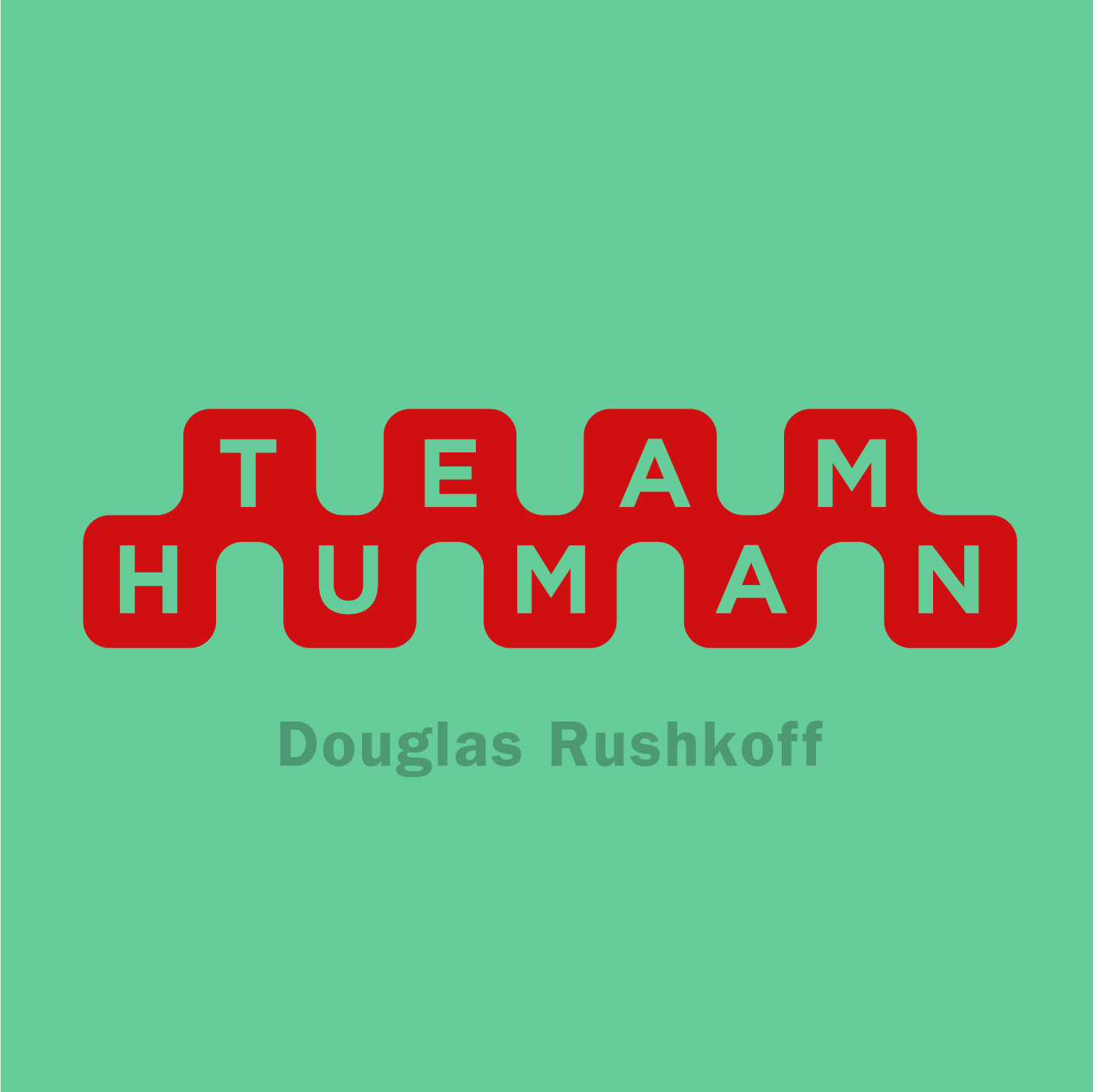
Team Human
Douglas Rushkoff
7am
Solstice Media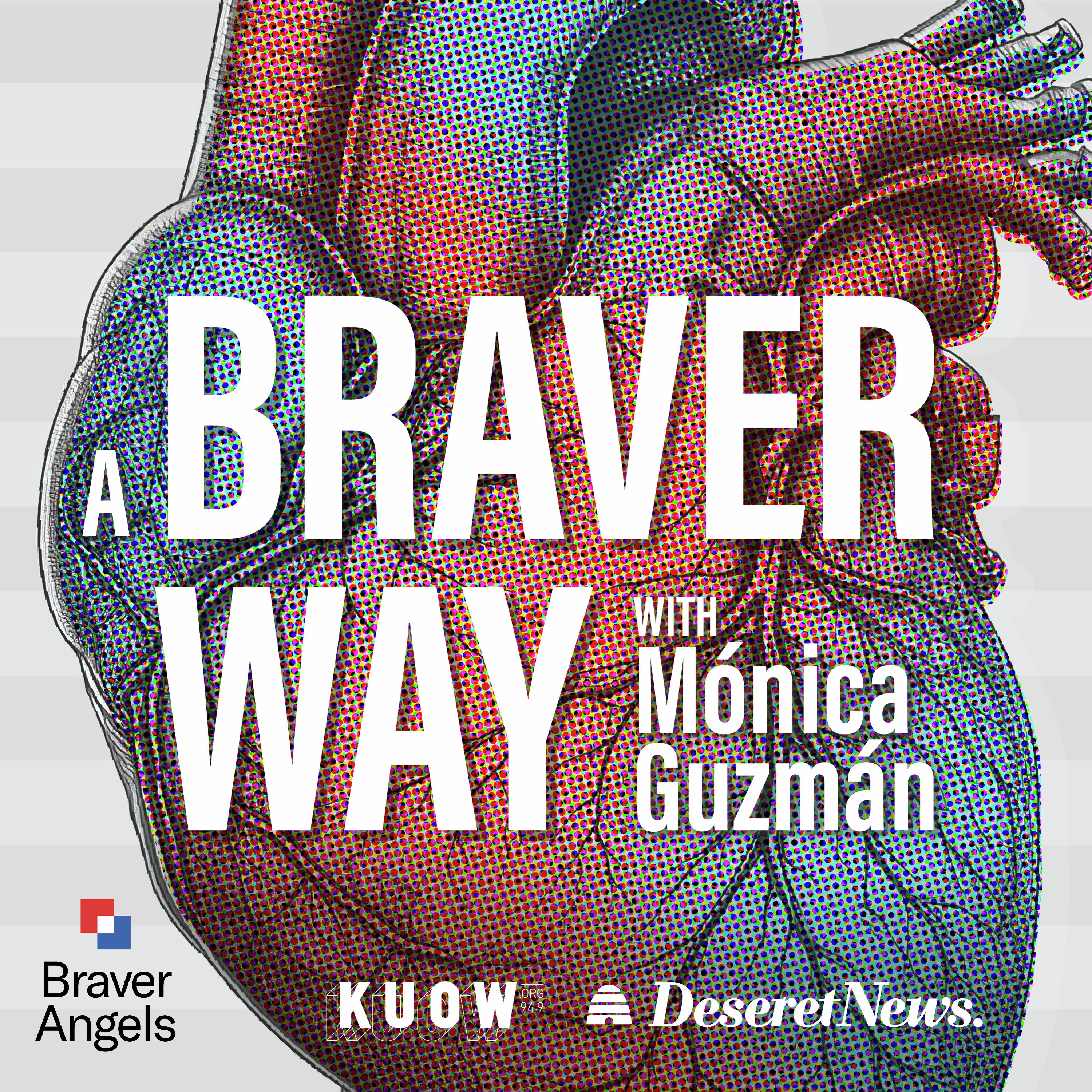
A Braver Way
Monica Guzman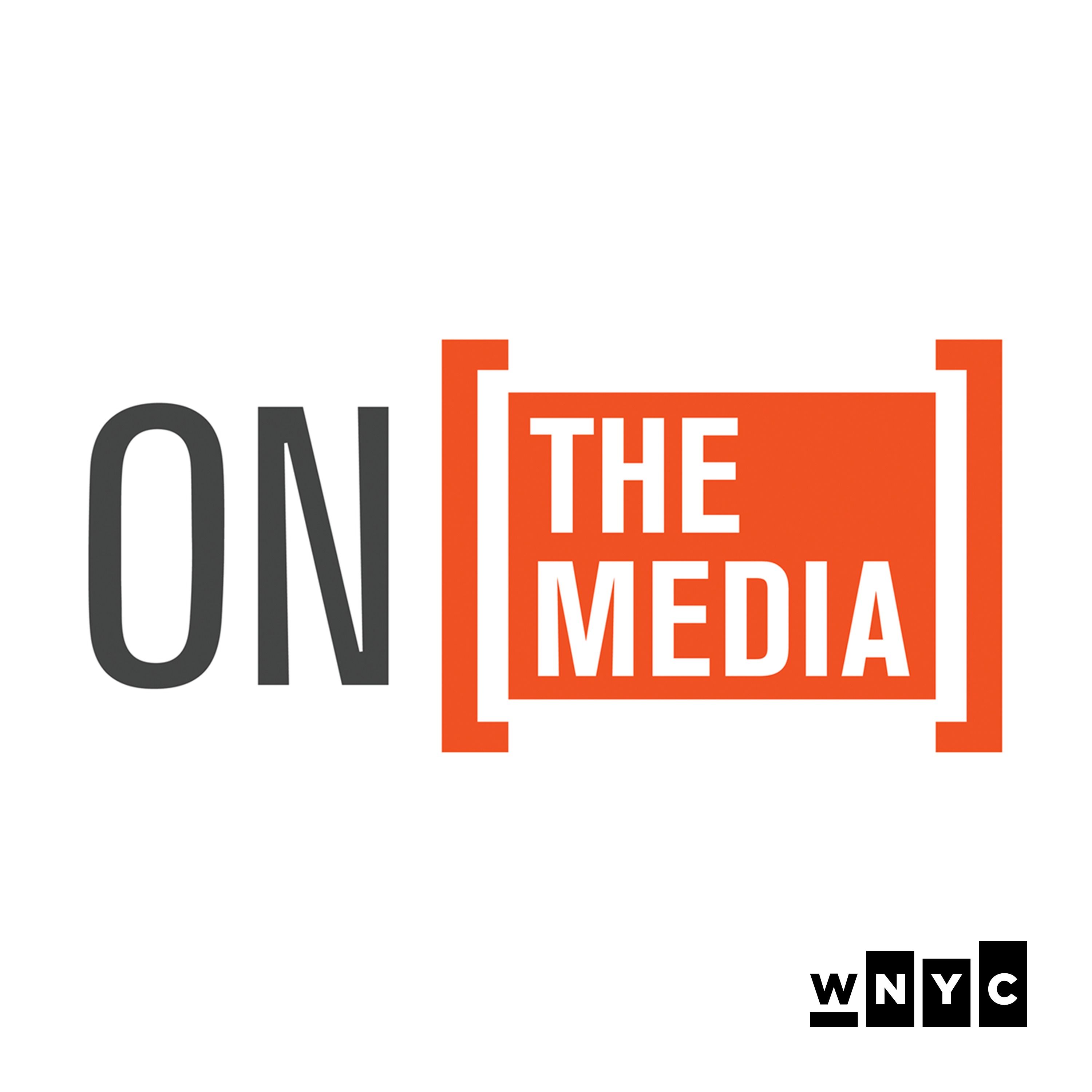
On the Media
WNYC Studios
Aboriginal Way
Aboriginal Way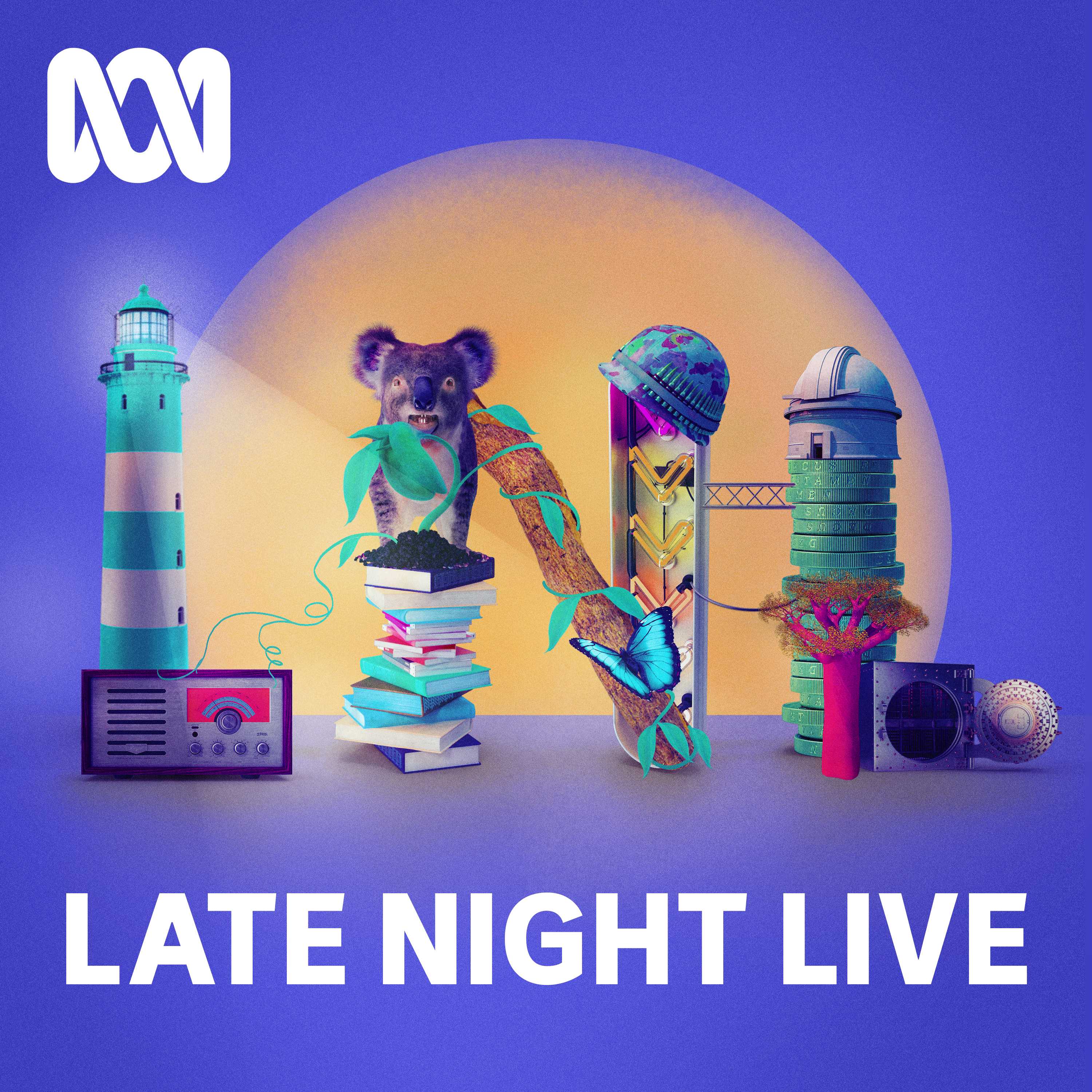
Late Night Live - Separate stories podcast
ABC listen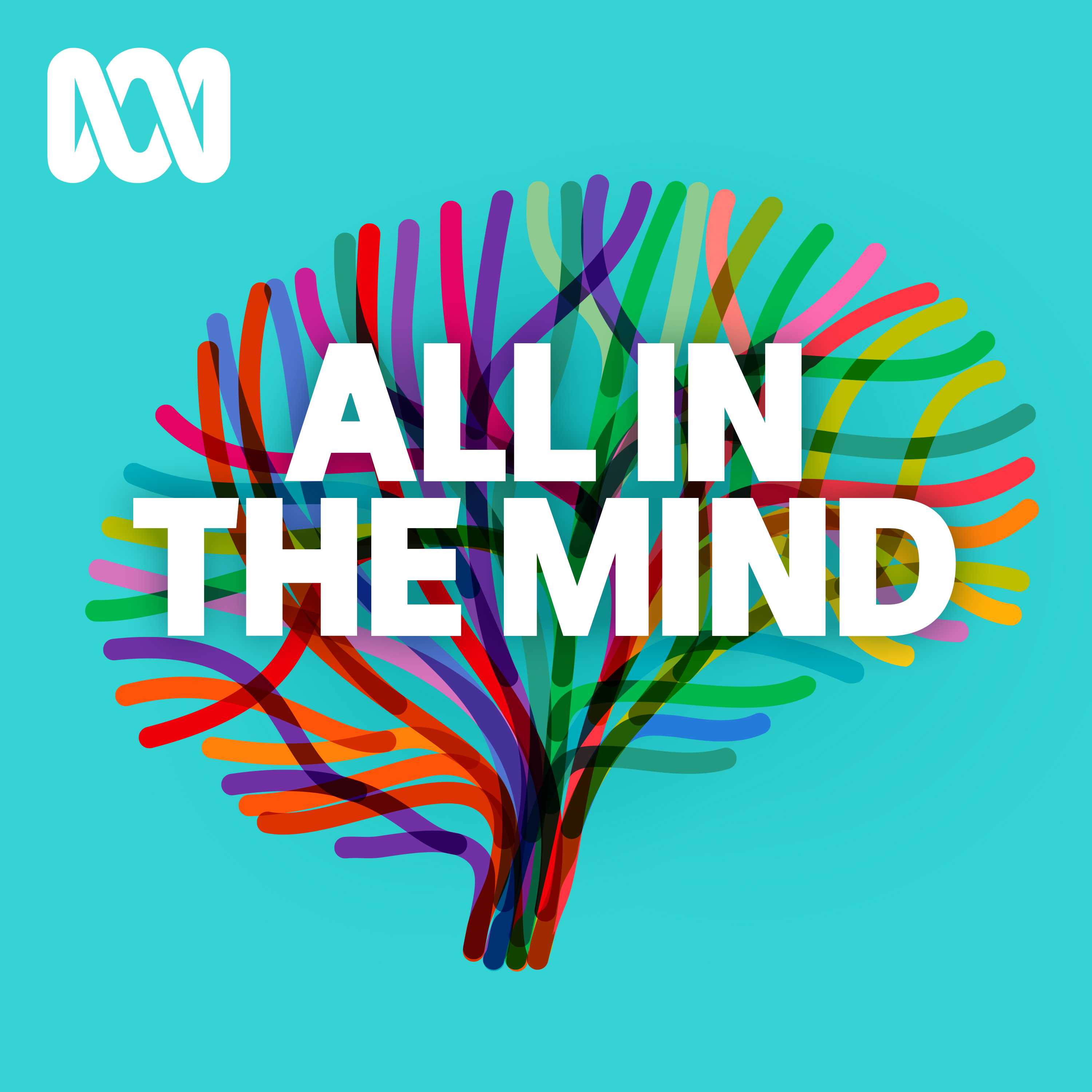
All In The Mind
ABC listen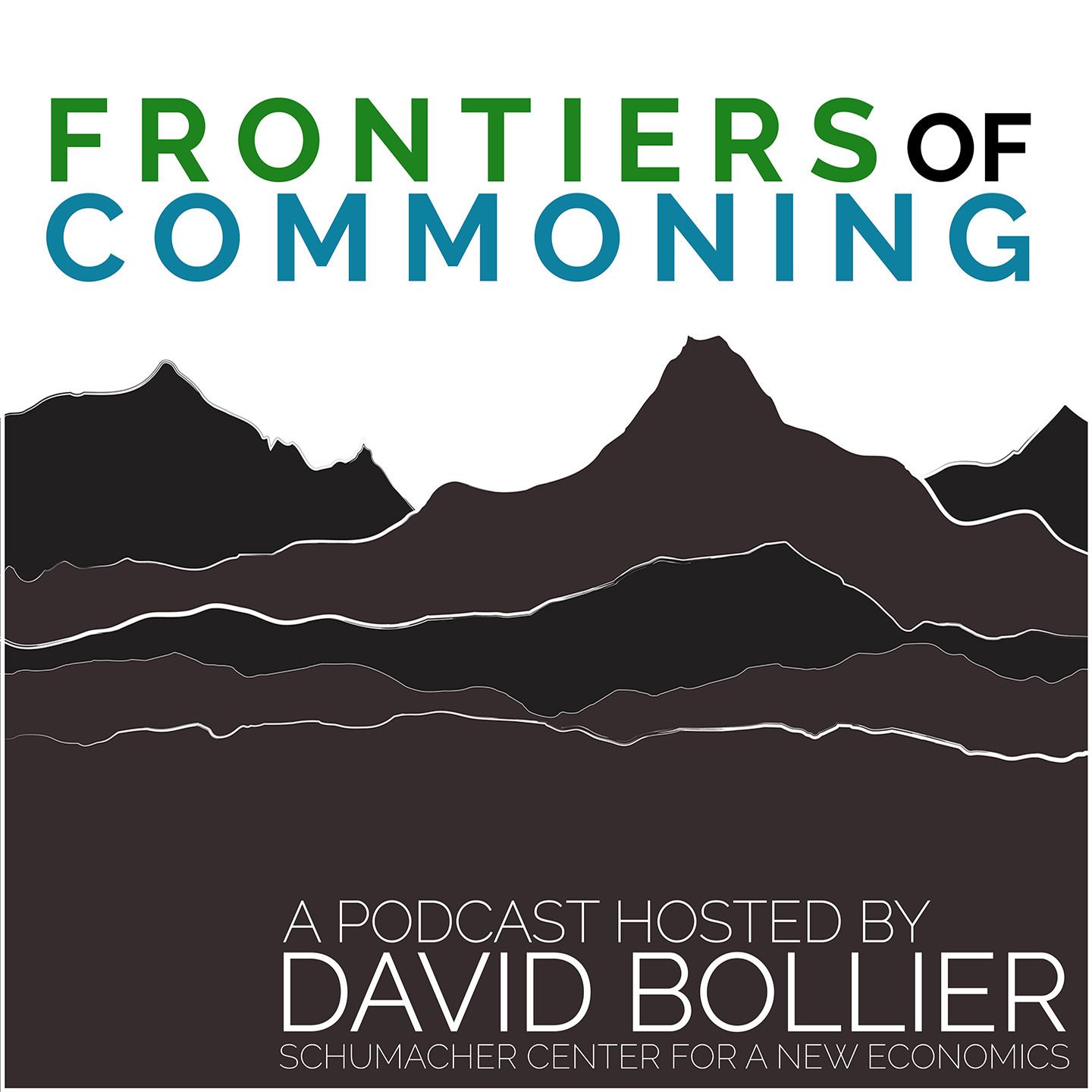
Frontiers of Commoning, with David Bollier
The Schumacher Center for a New Economics, David Bollier
Futuresteading
Jade Miles
The Lindisfarne Tapes
The Schumacher Center for a New Economics
Buzzcast
Buzzsprout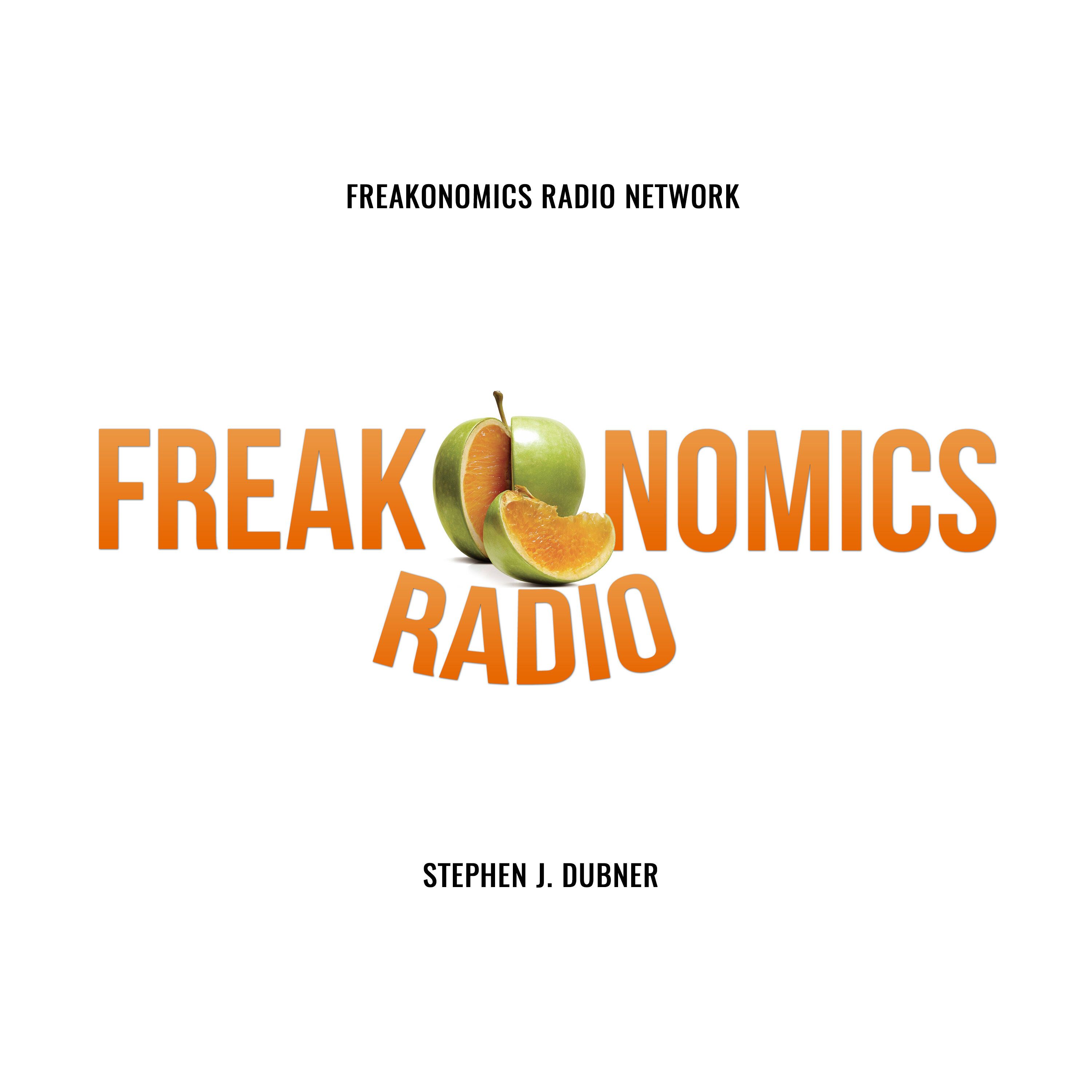
Freakonomics Radio
Freakonomics Radio + Stitcher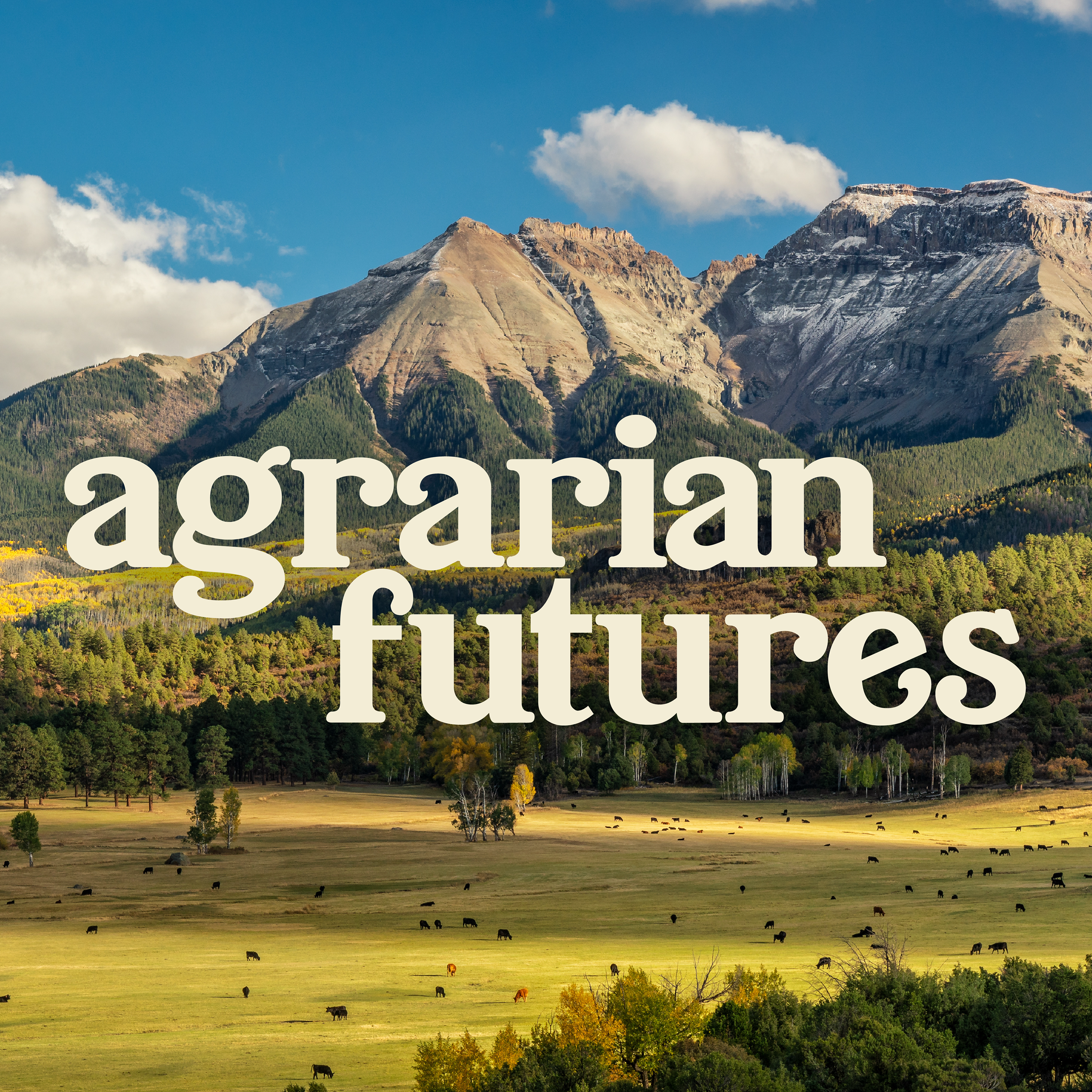
Agrarian Futures
Agrarian Futures
Mountain & Prairie with Ed Roberson
Ed Roberson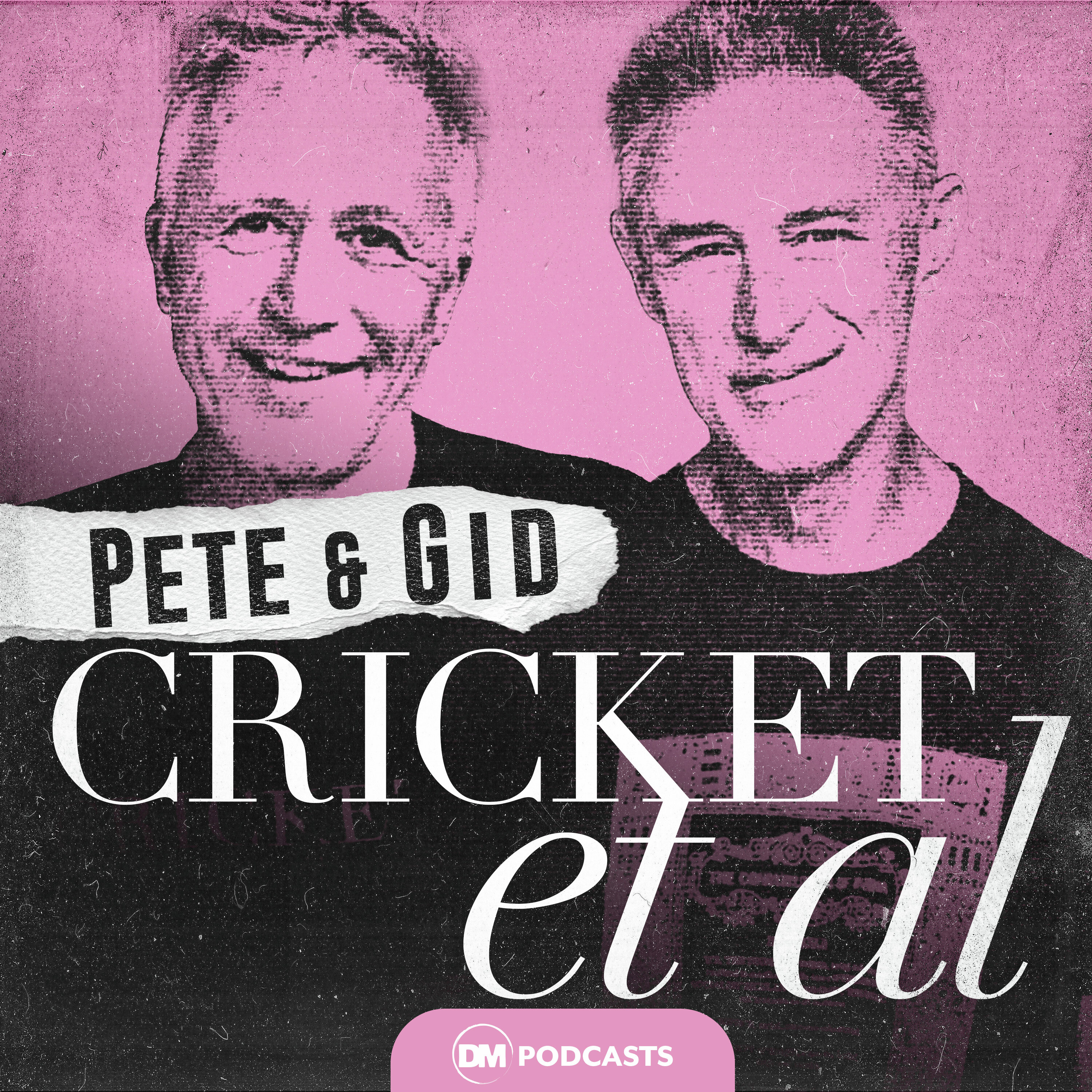
Cricket Et Al
Cricket Et Al
Broken Ground
Southern Environmental Law Center
Lost Prophets
Elias Crim & Pete Davis
Conversations
ABC listen
